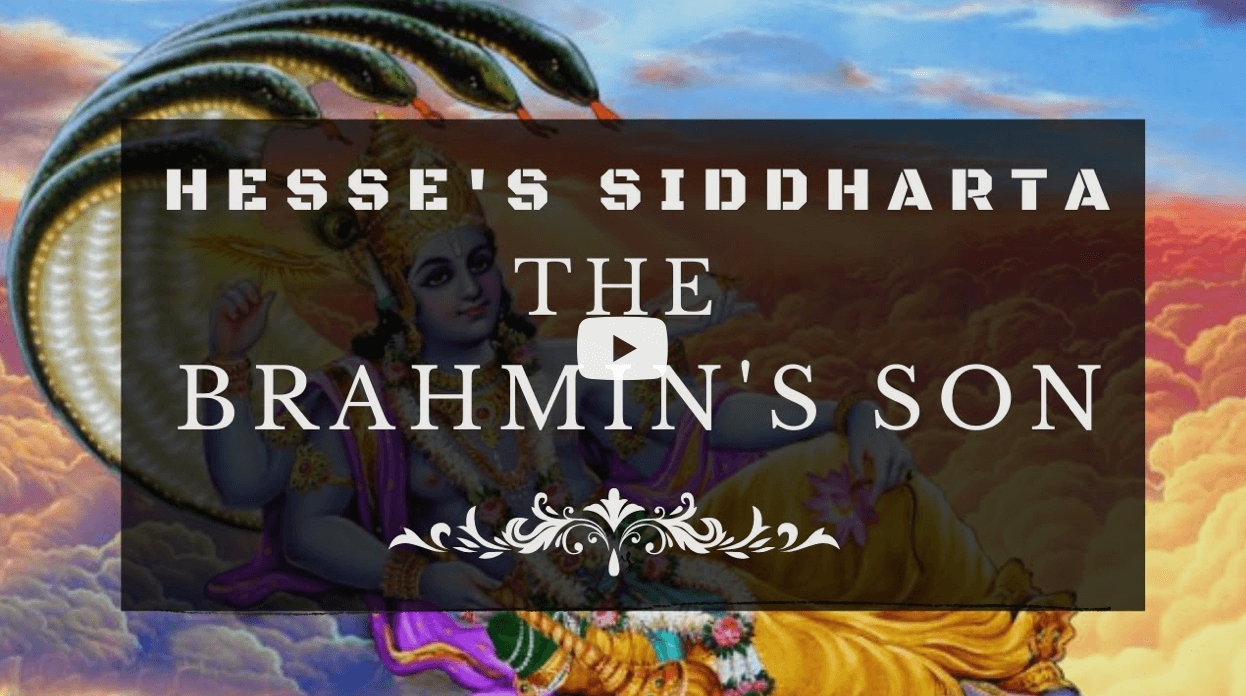Siddharta by Hermann Hesse is a life-changing book.
The work is a slim masterpiece, but one that deserves a long, slow, deep read. I would encourage you to tuck the book into your back pocket and take it into the heart of nature with you. Take the Nobel Prize winning Hesse with you, and meditate on the nature of Atman.
10 Tips for How to Read Hermann Hesse’s Siddharta
1 – Go into Siddharta with a set of burning questions
Rilke advised us to learn to love the questions.
And I would add to that an imploration:
Go into your next Great Book with a set of questions you need answers to.
Wherever you are in your life right now, take stock and pinpoint what you need to know.
- Do you have questions about love?
- Do you have questions about money?
- Do you have questions about family?
- Do you have questions about spirituality?
You will find answers, and yourself, in the mirror that is Siddharta.
2 – Use Siddharta as a mindfulness workbook
Yes, the work is an example of great literature.
And, yes, you can appreciate it for its aesthetic splendour alone.
But Hesse’s masterpiece is also a workbook for helping you sort out your life.
3 – Read around Siddharta with secondary texts
There are two books I highly recommend for anyone reading a story that details an adventure.
Whether you’re reading a meaty book like Melville’s Moby Dick or Cervantes’ Don Quixote, or a more compressed volume like Hesse’s Siddharta, these two books will help illuminate the themes and preoccupations:
These books, and the guided literary lectures in the Book Club, will help you to stop procrastinating on your dreams.
For a breakdown of the hero’s journey template underpinning the mythological stories, check out the Hardcore Literature Book Club. You can see the first video in the lecture series below.
4 – Use Siddharta as a gateway deeper into the heart of literature
You should always treat these books as keys to a much wider tradition.
When we read Crime and Punishment in the Book Club, we used Dostoyevsky’s claustrophobic masterpiece to unlock the wisdom of Biblical literature.
When we read Austen’s Persuasion, we unlocked Romanticism and the poetics of the sublime.
Tolstoy’s Anna Karenina afforded us a glimpse into the philosophy of Nietzsche and Schopenhauer and the psychology of Freud and Jung.
With Siddharta, you can go down two avenues:
- German Literature
- Indian Literature
We do this with the Hardcore Literature lecture series, making the Hindu and Buddhist teachings more digestible and practically applicable.
If you would like a podcast to help you on your way with Indian Literature, I recommend the Bhagavad Gita episode.
5 – Use Siddharta as a pathway to unlocking Eastern Wisdom
Following on from the preceding point, I highly recommend you use your reading of Siddharta as an opportunity to embrace some of the teachings of Buddha.
Learn about the dhukka/sukha (suffering/pleasure) binary, and how to rise above it to a state of ananda, nirvana, or bliss.
They say when the student is ready, the teacher appears.
Well, when the reader is ready, the book appears.
And when Siddharta appears in your life, you are ready to reevaluate your spiritual practices.
Of course, if you already have a scriptural practice, use this as an opportunity to learn more about that.

The first lecture on Hermann Hesse’s Siddharta, from the Hardcore Literature Book Club
6 – Connect your suffering with that of Hesse and Siddharta
Learning to live the Great Books means befriending the characters.
To befriend a character, you must sympathise with them – become in simpatico with them.
Reading these great works of literature is rarely pure escapism (though, of course, the good ones offer that too). It’s hard work, suffering, and taking on the concerns of the characters through vicarious experience to better help you grow.
7 – Carry the book with you
With the rise of the smartphone, and our resulting addiction to the screen, we lost the charm of carrying a great book with us.
A great book will always keep you company.
Make it part of your life. Read it on trains and planes. Read it on your lunch break. Read it over morning coffee and evening nightcap.
It’s a reminder to live your life alongside your reading of the Great Books.
8 – Get a good translation of Siddharta
The most poetic, and faithful, translation I have found is by Hilda Rosner.
It’s freely available in the UK in Penguin Modern Classics paperback, with a wonderful introduction from Paulo Coelho, but seems to be difficult to get one’s hands on outside of the country.
9 – Appreciate the aesthetics of Hesse’s writing
We love reading these books for insight in how best to live, to help us development our character, and to fortify our motivation to go forth boldly in the world.
But we must remember to slow down, pause, and appreciate the surface beauty and charming artifice of these tales too.
Hesse crafts a compelling and visually rich depiction of India that makes one feel as though they are actually in the country savouring the splendour of their surroundings.
10 – Get a book buddy (or join a book club)
The thing I love most about deep-reading the Great Books is engaging with a community of literature lovers.
Reading is best when it’s communal.
We communicate with the author across time, we communicate with ourselves, and if we read it with friends and loved ones as part of a Book Club, we learn to talk to each other.
There are few activities as rewarding and spiritually nourishing.
If that sounds like a great way to unlock deeper enrichment from your reading, you’re warmly welcome and invited to read Siddharta as part of the Hardcore Literature Book Club.